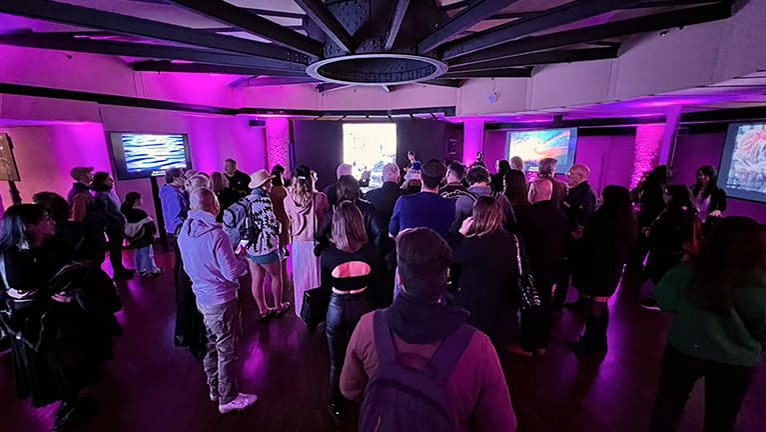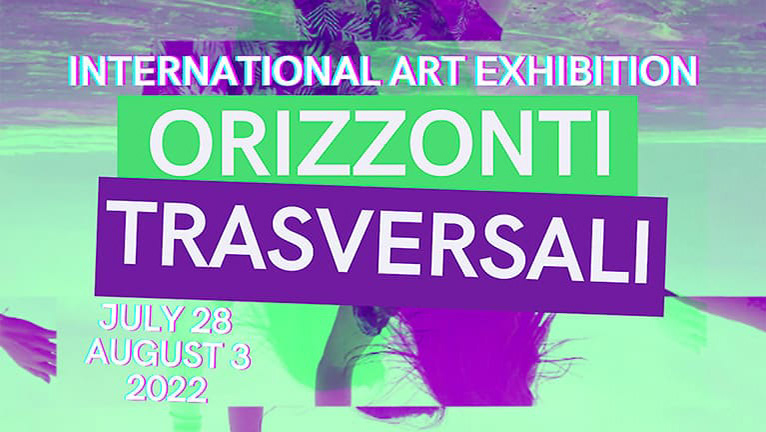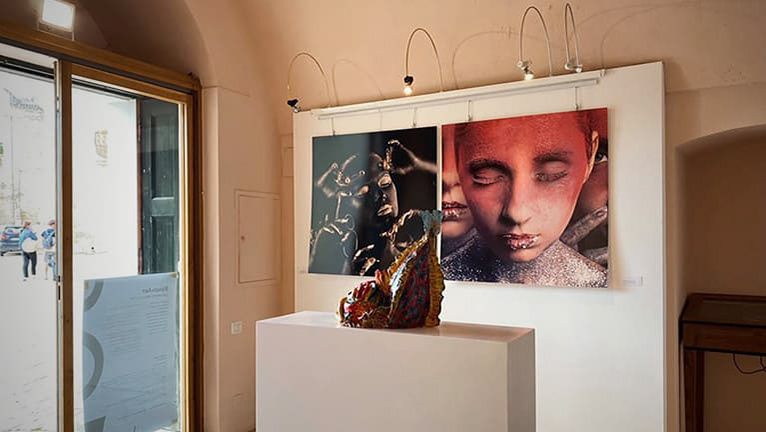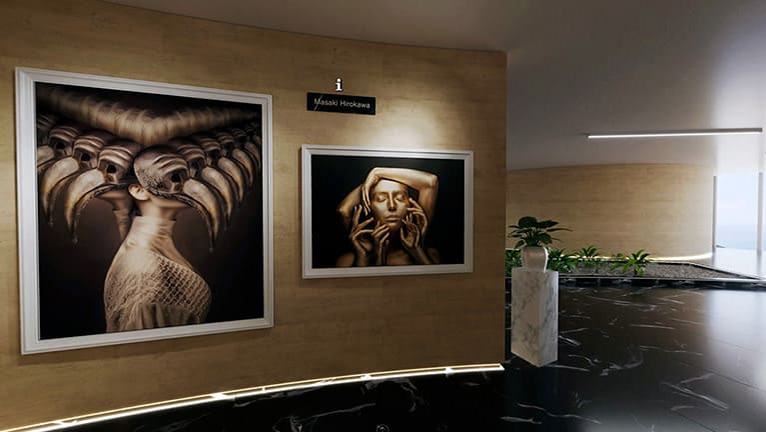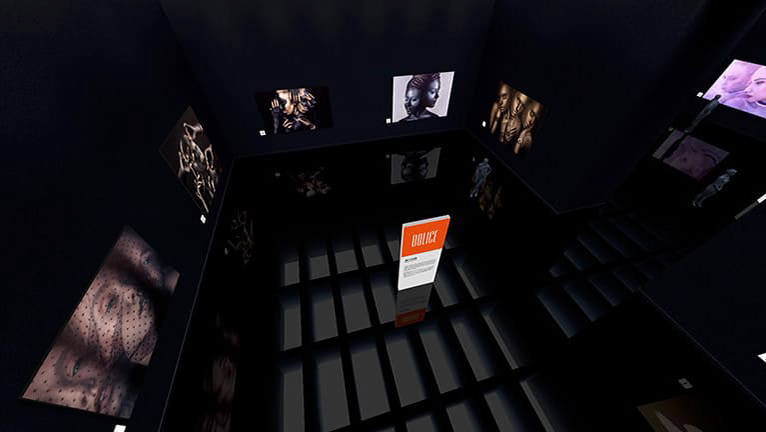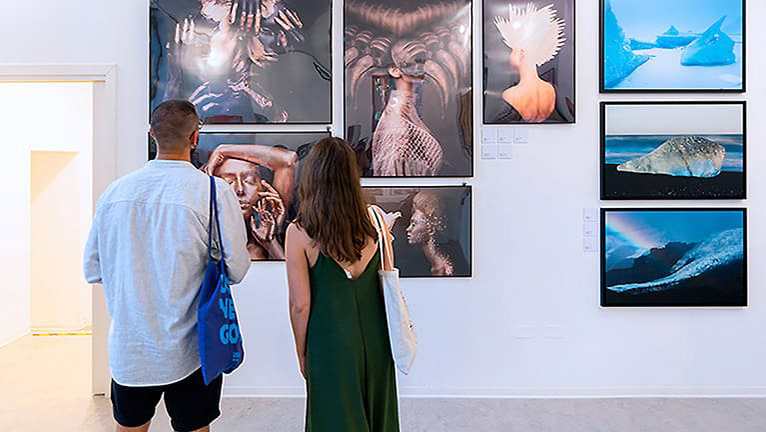I THE WORLD REVOLVES AROUND ME - M.A.D.S. ART GALLERY
International Art Exhibition
January 28th - Febrary 3rd 2022
ITALY (Milan) - SPAIN, ISLAS CANARIAS (Fuerteventura)
International Art Exhibition
January 28th - Febrary 3rd 2022
ITALY (Milan) - SPAIN, ISLAS CANARIAS (Fuerteventura)
M.A.D.S. ART GALLERY has opened the exhibition I THE WORLD REVOLVES AROUND ME, which will be held in Milan, Italy and Canary Islands, Spain. 5 graphic works are exhibited. M.A.D.S. ART GALLERY's official website for more information.
May the pain of this world be eased, even if only a little, in the chaos of the world before its creation. May all people hold hands equally and welcome the world that has begun to sprout with blessings.
M.A.D.S. ART GALLERYさん主催、イタリアのミラノとスペインのカナリア諸島で開催される I THE WORLD REVOLVES AROUND ME展が始まりました。5点のグラフィック作品を出展しています。M.A.D.S. ART GALLERY 公式ウェブサイトより詳細をご覧いただけます。
創世前の混沌とした世界で、僅かでもこの世界の痛みが和らぎますように。新たに芽吹き始めた世界を、人々が皆等しく手を繋ぎ、祝福と共に迎えられますように。
Archon / 偽神
Nov 2020 / 62 x 88 cm
Nov 2020 / 62 x 88 cm
In the midst of a chaotic world situation, the role of nations, organizations, and traditions is being questioned anew. There are those who have lost their faith in the world and believe only in a god of their own creation. They worship and love their idols and feel closer to them than to their family and friends. Knowing that their faith is false, they cling to it and continue to love it, and eventually it will materialize into an idol and give them a soul. It may be said that this is one of the forms of human evolution.
混沌とした世界情勢の中、国家や組織、或いは伝統の持つ役割が改めて問われつつあります。世の中には信じられるものを失い、自ら創り出した神のみを信じる人々も居るでしょう。彼らは偶像を崇拝し、愛で、家族や友人よりも身近なものとして捉えています。その信仰が偽りであることを知りながらも縋り、尚も愛し続ける心は、やがて偶像を具現化し魂をも吹き込むでしょう。それも人類の進化の形態の一つと云えるかもしれません。
Forgotten Sky / 忘却の眺め
Aug 2020 / 62 x 62 cm
Aug 2020 / 62 x 62 cm
Today's children can only read the emotions of others through a mask. They try to communicate based on what they feel when they look into the eyes of the other person, and the feeling that comes from the other person's entire body. This work was created with the hope that we will soon be able to see the smiling faces of children under a blue sky, knowing that the blue sky is probably already a memory.
現代の子供たちはマスク越しに相手の感情を読み取るしかありません。相手の目を見て感じることや、相手の体全体から伝わって来るフィーリング、それらを基にコミュニケーションを試みます。この作品は、早く青空の元で子供たちの笑顔が見られますようにという祈りを込めて制作されました。その青空はもう思い出の彼方にあるのだろうと知りながら。
The other person is a mirror of oneself, and oneself is a mirror of the other person. The feelings that we have for others are the feelings that they have for us, and we unconsciously and sensitively sense them. If this is true, then loving others is a variant of self-love. In order to love others, we must first love ourselves and forgive ourselves for our inability to love. This involves human suffering, and the suffering that lies behind this fierce desire is the gift that has been given to all beings.
他者は自身の鏡であり、自身は他者の鏡です。自身が相手に持っている感情は、相手が自身に対し持っている感情であり、人間は無意識下で敏感にそれらを感じ取っています。もしそれが真実であるとすれば、人を愛することは即ち、自己愛の變形であると云えるかもしれません。人を愛するにはまず自分自身を愛し、愛せない自分自身をも赦さなければなりません。そこには人間としての苦悩が伴い、その熾烈な願望の裏にある苦悩こそが、全ての存在に与えられたギフトなのです。
Reclining Buddha / 涅槃像
Oct 2020 / 100 x 80 cm
Oct 2020 / 100 x 80 cm
The place where I was born would have been so beautiful that it would have looked like the sea of creation. Where I am going, where I am coming back. I can't hear that song anymore, and I can't even remember that nostalgic voice. One day I will deliver this soul to nirvana. With the midnight smoke rising high in the sky.
私の生まれたところは、きっと創造の海と見紛うほど美しかっただろう。私の往くところは、還るところは。もうあの唄も聞こえず、懐かしいあの声すら思い出せない。いつかこの魂を涅槃へ届ける。空高く立ち昇る夜半の煙とともに。
Uriel / 静謐な世界
May 2020 / 106 x 73 cm
May 2020 / 106 x 73 cm
This work was created as a prayer for a world of tranquility to come to people. The world is about to be reborn, changing its shape drastically, and in this violent swell, various cultures, commerce, distribution, and many irreplaceable lives have been lost. What we can feel from this work is sorrow, prayer, compassion, and hope.
この作品は静謐な世界が人々の元に訪れるよう祈念して制作されました。世界は大きく形を変えながら生まれ変わろうとし、その激しいうねりの中で様々な文化、商業、流通、そしてかけがえのない数多の命が失われました。この作品から感じ取れるのは、哀しみと祈り、慈しみの心、そして希望です。
Introduction written by M. Matilde Della Pina:
Masaki Hirokawa is a Japanese artist whose wide range of activities includes graphic design, smartphone app development, interactive movie production and website development. At “I: The world revolves around me” exhibition hosted by M.A.D.S. Art Gallery, Masaki presents five photo collages.
“Archon” represents a woman with an animal's head who, with an intense and hypnotic gaze, looks straight at us, transmitting all her strength and authority. As with all Masaki's works, this collage is a profound reflection on the reality that surrounds us: in the midst of a chaotic world situation, the role of nations, organizations and traditions is in fact being questioned anew. There are those who have lost their faith in the world and believe only in a god of their own creation. They worship and love their idols and feel closer to them than to their family and friends. Knowing that their faith is false, they cling to it and continue to love it, and eventually it will materialize into an idol and give them a soul. It may be said that this is one of the forms of human evolution.
“Forgotten Sky” represents a human face of a little girl whose eyes, however, we do not see: in fact they are covered by a dense cloud that flies in front of her, preventing us from seeing her face totally. This work also intends to make us reflect on the fact that today’s children can only read the emotions of others through a mask. They try to communicate based on what they feel when they look into the eyes of the other person, and the feeling that comes from the other person's entire body. This work was created with the hope that we will soon be able to see the smiling faces of children under a blue sky, knowing that the blue sky is probably already a memory.
"Narcissism" represents the human suffering that is hidden in love relationships: the other person is in fact a mirror of oneself and the feelings that we have for others are the feelings that they have for us, and we unconsciously and sensitively sense them. Loving others is therefore a variant of self-love and in order to love others, we must first love ourselves and forgive ourselves for our inability to love. This involves human suffering, and the suffering that lies behind this fierce desire is the gift that has been given to all beings.
"Reclining Buddha" represents two human faces that mix to create only one, with silver details that pierce its features.
For last, “Uriel” was created as a prayer for a world of tranquility to come to people. The world is about to be reborn, changing its shape drastically, and in this violent swell, various cultures, commerce, distribution, and many irreplaceable lives have been lost. What we can feel from this work is sorrow, prayer, compassion, and hope.
Exhibition Concept by A cura di Martina Viesti:
“Preferisco dipingere gli occhi degli uomini che le cattedrali, perché negli occhi degli uomini c’è qualcosa che non c’è nelle cattedrali, per quanto maestose e imponenti siano.” (Vincent Van Gogh)
La psicologia dell’arte, dai suoi albori, indaga la correlazione tra identità e arte. Per poter effettuare un’analisi soddisfacente è opportuno considerare quale sia, effettivamente, la nascita dell’individualità. Alcuni storici hanno constatato come la formazione del mondo moderno abbia accompagnato l’affermazione dell’individualismo. La crisi del medioevo e la formazione di nuove classi sociali porta alla possibilità di un distacco delle persone dalla conformità, e la prova tangibile di questo distacco è rappresentata dall’autoritratto. Inizialmente, gli artisti inserivano la propria figura tra le folle di persone che dipingevano, poi, a poco a poco, si è arrivati al primo autoritratto, risalente a quello del pittore Jean Fouquet (Tours, 1420-1471/81?).
Inizia così, un lento, ma inarrestabile processo di formazione della modernità, in un cui la coscienza collettiva comincia a frammentarsi, dividersi, e scomporsi; e da questo momento comincia ad emergere l’individualità dell’artista e la coscienza che ha di sé.
Secondo Stefano Ferrari, professore di psicologia dell’arte presso l’università di Bologna, il vero problema è da ricercarsi nel fatto che la nostra identità spesso non coincide con la nostra immagine, ma è necessario che questa identità venga rappresentata e presentata al mondo attraverso l’immagine. L’arte stessa è individualità e affermazione di sé, nonostante nasca all’interno di stili e correnti, l’atto artistico è di per sé individuale, si tratta di autorealizzazione.
Furono due, gli artisti che hanno segnato la storia del XX secolo, da un lato il surrealista Salvador Dalì e dall’altro l’emblema della PopArt Andy Warhol, il primo intuì da subito il grande potenziale e l’enorme rilievo che cominciavano ad avere i mass-media e che per raggiungere il successo era indispensabile utilizzarli e servirsene.
Con Dalì nasce la rappresentazione dell’artista come divo, il suo atteggiamento da dandy e il suo comportamento eccentrico cominciarono ad attirare un’estrema attenzione. Con Dalì, quindi, si ha un’unione tra artista e personaggio pubblico, la nascita dell’icona artistica, un idolo e si diffonde, quindi, un’elevata cura del proprio aspetto e della propria rappresentazione verso l’esterno. Warhol, al contrario, era un individuo costantemente tormentato e insoddisfatto dal suo aspetto, percepiva un senso di inadeguatezza costante e agognava l’accettazione sociale. Con la diffusione dei mass-media, quindi il confine tra artista e individuo viene a confondersi, le due figure si fondono e la personalità stessa dell’artista diventa motivo di ammirazione e idealizzazione.
L’autoritratto, l’autorappresentazione, la percezione di sé e della propria identità sono temi assolutamente attuali e di preminente importanza nella società del XXI secolo, i Social Media e il palcoscenico quotidiano hanno permesso un all’allargamento dei confini tra vita privata e vita pubblica, tra Retroscena e Ribalta, per ritornare alla teoria sociologia di Erving Goffman. I ruoli degli individui si fondono, così come Dalì e Warhol, non si è più una cosa o l’altra, a seconda delle circostanze, ma si è tutto, si è l’essenza di sé stessi e lo si vuole dimostrare in qualsiasi modo e attraverso qualsiasi strumento. Nasce, in questo nuovo mondo, dominato dalle comunicazioni, un senso di orgoglio relativo a ciò che si è, non esistono più nascondigli o luoghi in cui celare la propria identità e la propria essenza, ma al contrario si innescano vere e proprie rivoluzioni individuali in cui si prende coscienza della propria esistenza e la si celebra, tornando ad essere al centro e protagonisti della propria vita. Viene completamente messa in secondo piano la coscienza collettiva e la sua identità, e con essa le caratteristiche sociali che hanno, fin a quel momento, definito i ruoli degli individui. Questa nuova realtà porta con sé un senso di libertà individuale, in cui le persone hanno piena coscienza di chi sono e del loro potenziale, è l’individuo a regnare sovrano.
I sociologi parlano di Seconda Modernità, una realtà in cui vengono portati a compimento le trasformazioni iniziate nella prima modernità: una modernità in cui la spinta liberatrice era frenata dalla presenza di altri enti, come la classe sociale, la famiglia d’origine, il lavoro. È nella seconda modernità che questa spinta liberatrice trove la sua massima espressione , si ha un’intensificazione del processo di individualizzazione. Infatti, la prima modernità aveva assoggettato dai limiti imposti dalla tradizione e dalla società, la seconda modernità li libera dai tutti i modelli istituzionalizzati che ne plasmavano l’esistenza. Questa nuova modernità porta con sé il principio secondo il quale le persone debbano fare di sé stesse il centro dei propri progetti e di costruirsi come il proprio capolavoro. Su questo concetto, quello della Self-culture, una nuova sensibilità culturale, caratterizzata per l’importante valore attribuito all’autonomia e all’autogestione di ogni stile di vita, M.A.D.S. Art Gallery, vuole invitare gli artisti ad esprimere la propria essenza, scardinata da ciò che il mercato desidera e richiede, da ciò che il gusto artistico generalizzato agogna. M.A.D.S. Art Gallery chiede, quindi, agli artisti di esprimere il proprio senso di sé, di autodeterminarsi come creatori, elevandosi al di sopra di ogni confine, sia esso stilistico o tecnico, seguendo una sola parola “osare”.
